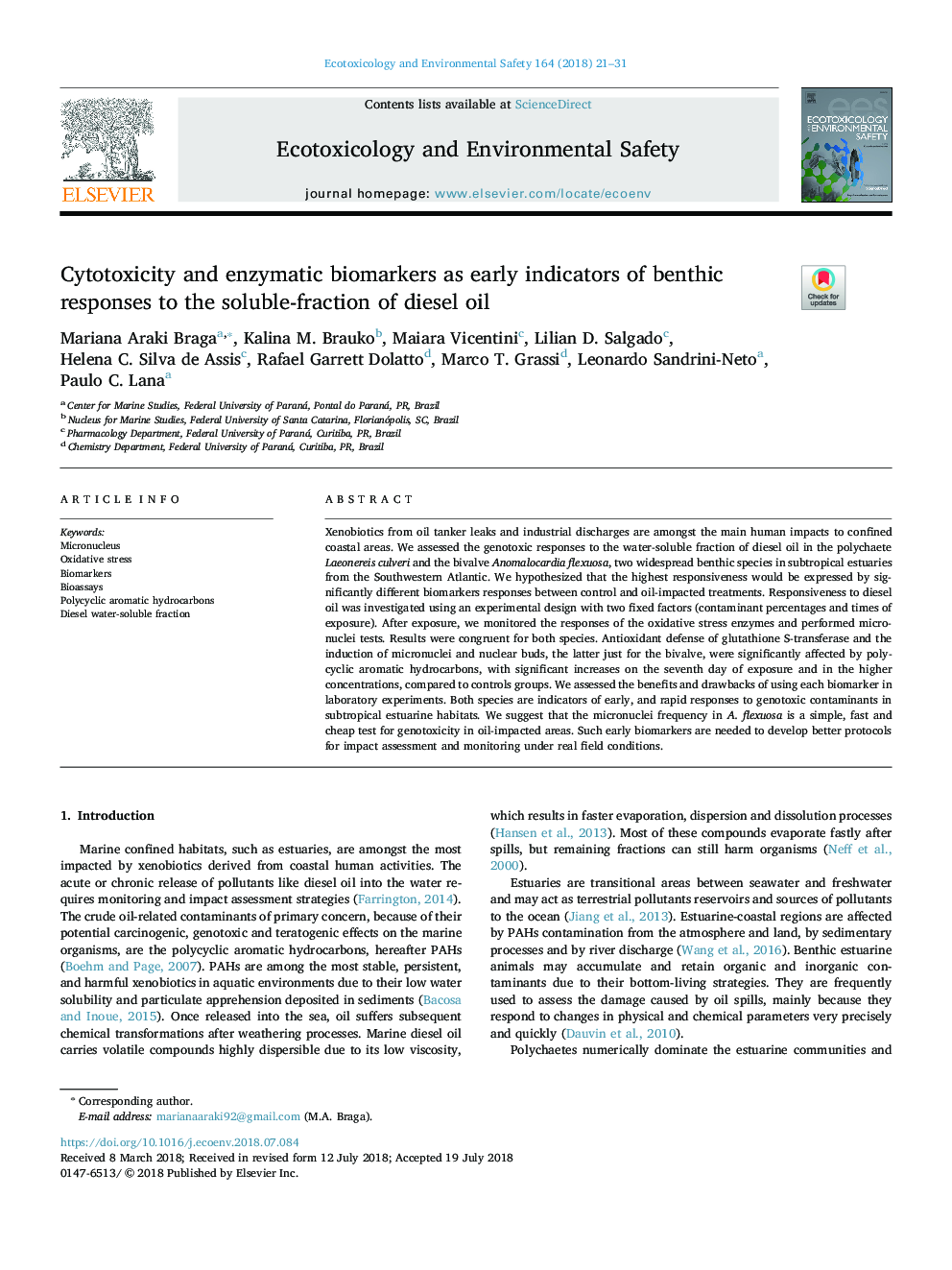| Article ID | Journal | Published Year | Pages | File Type |
|---|---|---|---|---|
| 8852997 | Ecotoxicology and Environmental Safety | 2018 | 11 Pages |
Abstract
Xenobiotics from oil tanker leaks and industrial discharges are amongst the main human impacts to confined coastal areas. We assessed the genotoxic responses to the water-soluble fraction of diesel oil in the polychaete Laeonereis culveri and the bivalve Anomalocardia flexuosa, two widespread benthic species in subtropical estuaries from the Southwestern Atlantic. We hypothesized that the highest responsiveness would be expressed by significantly different biomarkers responses between control and oil-impacted treatments. Responsiveness to diesel oil was investigated using an experimental design with two fixed factors (contaminant percentages and times of exposure). After exposure, we monitored the responses of the oxidative stress enzymes and performed micronuclei tests. Results were congruent for both species. Antioxidant defense of glutathione S-transferase and the induction of micronuclei and nuclear buds, the latter just for the bivalve, were significantly affected by polycyclic aromatic hydrocarbons, with significant increases on the seventh day of exposure and in the higher concentrations, compared to controls groups. We assessed the benefits and drawbacks of using each biomarker in laboratory experiments. Both species are indicators of early, and rapid responses to genotoxic contaminants in subtropical estuarine habitats. We suggest that the micronuclei frequency in A. flexuosa is a simple, fast and cheap test for genotoxicity in oil-impacted areas. Such early biomarkers are needed to develop better protocols for impact assessment and monitoring under real field conditions.
Related Topics
Life Sciences
Environmental Science
Environmental Chemistry
Authors
Mariana Araki Braga, Kalina M. Brauko, Maiara Vicentini, Lilian D. Salgado, Helena C. Silva de Assis, Rafael Garrett Dolatto, Marco T. Grassi, Leonardo Sandrini-Neto, Paulo C. Lana,
